Facets of Business Aviation in Middle East
Bringing together Industry stalwarts, flag bearers and most influential corporate travellers to drive the industry forward, the MEBAA show is the foremost business aviation event in the Middle East. The bi-annual exhibition cum conference was held in Dubai from December 10-12, 2018 and saw tremendous response for all stakeholders.

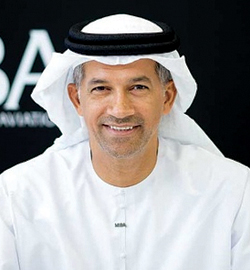 Ali Ahmed Al Naqbi
Ali Ahmed Al NaqbiFounding & Executive Chairman Middle East Business Aviation Association (MEBAA)
MEBAA conference were held in Dubai on December 11 to 12, 2018, in conjunction with the MEBAA show. In the first session on the inaugural day of the MEBAA conference, as the business aviation sector speaks of an impressive success story in the Middle East, Jayant Baranwal, Editor-in-Chief, SP’s AirBuz poses a few questions to the panel comprising Alan Peaford, Anchor of the conference, Claudio Camelier, Vice President Sales, Middle East and Asia-Pacific, Embraer Executive Jets; Khader Mattar, Vice President Sales, MEA, Asia Pacific & China, Bombardier and Steve Cass, Vice President, Sales Development and Support, Gulfstream.
The focus of the questions remained intercountry Regulations, Parking Space and Taxations in the region and also as to how to look at the future on the travel by supersonic business aircraft. The show is organised by MEBAA (Middle East Business Aviation Association) headed by Ali Ahmed Al Naqbi, who is the Founding & Executive Chairman of the association and has been working relentlessly towards upliftment of the BA/GA industry in the Middle East region.
Jayant Baranwal:
- Does it differ from one country to the other in the Middle East region, in terms of – Regulations, Parking Space and Taxations?
- Does the entire region offer the same (business) environment across the countries in the region?
- Do you believe in the supersonic concept, which is being worked out by Aerion and Boom (which is more of a passenger airliner-market based, though)? And how practically viable this could be?
- What “Next” we should expect from OEMs compared to the current level of technologies being offered in the business jets.
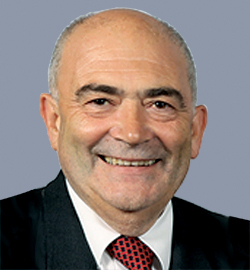 Alan Peaford
Alan PeafordAnchor of the conference
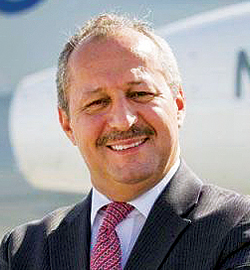 Khader Mattar
Khader MattarVice President Sales, MEA, Asia Pacific & China, Bombardier
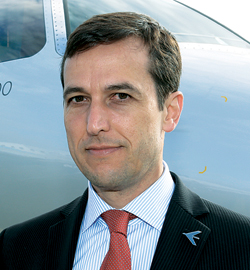 Claudio Camelier
Claudio CamelierVice President Sales, Middle East and Asia-Pacific, Embraer Executive Jets
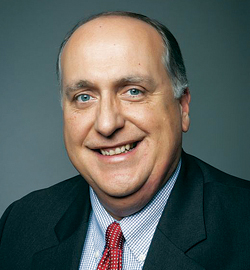 Steve Cass
Steve CassVice President, Sales Development and Support, Gulfstream
Khader Mattar:
Taxation: Every country in the region has a different taxation structure. Middle East (still, as a region) enjoys more ( friendly environment) than the other countries (or other continents). Taxation laws are softer here, as compared to India, China or Europe. It is a good time to buy and invest here, if you are running a business and can claim the tax back. There are (however) certain pluses and minuses of every region.
Parking: We enjoy the big and large airports, that the region offers, but these are very busy and (therefore) getting a parking space is difficult. Government is supportive enough to investments and does provide space outside the city, which makes it valuable to invest in Dubai.
We shall enjoy having much more but smaller airports with thehanger facilities. (Hence) we can enter the city and conduct our business. Dubai (in UAE) took the initiative. This city is built for business. It’s the infrastructure, which is a plus and there are FBOs all that is required for the industry to grow and flourish.
Business Environment: We cannot look at the region as one. All have different distinctions, we can look at some countries and push the model for them to emulate from the best practices (within the region).
“Dubai is generous compared to the other countries (in the region) in the taxation structure.” —Claudio Camelier, Embraer Executive Jets
Supersonic: As human beings, we have constantly looked at faster measures to travel. But it is coming, there is the bullet train in China, and questions on if I can travel faster? We need to look at the customer, do we need that speed and will they pay for that extra speed? Every manufacturer is looking into it. Future may see that happening. First customer to embark upon it, and that will be the operator (such as VistaJets).
Claudio Camelier:
Taxation: Middle East countries are generous compared to the countries in other regions in terms of taxation structure.
Parking: There are few restrictions (in the Middle East region) really. But there is a lack of hangers to hold the business aircraft. These are expensive machines and unfortunately they frequently sit outside in sun and sand. Dubai World Central (DWC) is an exception, else very few airports offer the hangers.
Supersonic: It is a market that we keep an eye on, though it is not on priority. We (as it is) bring innovative products to the customers. We see a lot of challenges in the operations (of a supersonic jet).
Steve Cass:
Taxation: It is business friendly (environment) here, which is a huge plus. This lacks in India and China.
Supersonic: It is coming in future. We need to look for at the regulations that many counties put in and do not allow it on their lands. Sanctions are required for that long an aircraft, an airport and other considerations need to be looked into. Looking at ways to do the supersonic, there will be a need of regulations, environmental law and airport space.
CONCLUSION OF THE DISCUSSION
And to conclude this discussion with supersonic jets, Alan Peaford, also the Editor in Chief, Arabian Aerospace asked for an opinion poll from the audience, if the audiences foresees Supersonic Jets happening in the coming decade, which had a raise of four to five hands. Alan then rephrased his question to, how many people would like to see Supersonic, happening in the coming decade. This had a majority of the house raise hands in affirmative.





